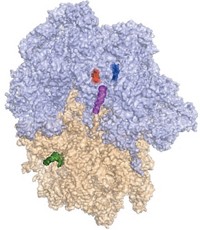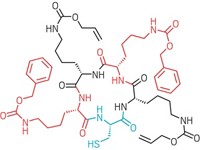Advertisement
Grab your lab coat. Let's get started
Welcome!
Welcome!
Create an account below to get 6 C&EN articles per month, receive newsletters and more - all free.
It seems this is your first time logging in online. Please enter the following information to continue.
As an ACS member you automatically get access to this site. All we need is few more details to create your reading experience.
Not you? Sign in with a different account.
Not you? Sign in with a different account.
ERROR 1
ERROR 1
ERROR 2
ERROR 2
ERROR 2
ERROR 2
ERROR 2
Password and Confirm password must match.
If you have an ACS member number, please enter it here so we can link this account to your membership. (optional)
ERROR 2
ACS values your privacy. By submitting your information, you are gaining access to C&EN and subscribing to our weekly newsletter. We use the information you provide to make your reading experience better, and we will never sell your data to third party members.
Biological Chemistry
Chemists Build Synthetic Polymers From A DNA Blueprint
Technique precisely controls polymer sequence and structure, and it doesn’t require enzymes
by Carmen Drahl
March 4, 2013
| A version of this story appeared in
Volume 91, Issue 9
Synthetic polymers make great sensors or self-healing materials, but biological polymers such as proteins have an advantage—the ability to evolve. Chemists would like to evolve synthetic polymers with new applications in the same way nature evolves proteins. However, the strategies developed so far have led to polymers that look like DNA or RNA, because the polymer building blocks must somehow interact with a nucleic acid template. Harvard University’s Jia Niu, Ryan Hili, and David R. Liu have found they can overcome that limitation by using an adapter to interact with the template instead (Nat. Chem., DOI: 10.1038/nchem.1577). Their adapters correspond to DNA sequences that define polymer fragments. They are conceptually similar to the tRNA adapters nature uses to make proteins. Liu’s team attaches the adapters to polymer fragments to produce macrocyclic building blocks. After polymer synthesis, the researchers cleave a disulfide linker to remove the adapter. They have made β-peptides and polyethylene glycol polymers of up to 26 kilodaltons, about the same mass as a 230-amino acid protein. The polymers are completely encoded by DNA and don’t require enzymes for production. The team now aims to adapt this system to evolve synthetic polymers with new or improved features, such as antibiotic activity.





Join the conversation
Contact the reporter
Submit a Letter to the Editor for publication
Engage with us on Twitter